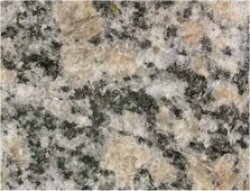
November Editorial
Spectral characteristics of Mars soils suggest presence of feldspar.

November Editorial
Spectral characteristics of Mars soils suggest presence of feldspar.
|
Granite is one of the most common igneous rock in Earth’s crust. However, it has always been thought that, though abundant on Earth, granite does not exist in the crust of other planets in our solar system, and certainly not on Mars. For a number of years now Mars has been considered to be geologically rather simple. The surface was thought to be almost entirely dark-coloured volcanic basalt. But earlier this year the Mars rover Curiosity sampled soil which yielded data suggesting that there may be more to Mars than just basalt.
|
Now further clues have come from NASA's Reconnaissance Orbiter. This has been used to survey three different places on Mars. These include a large volcano called Sytris Major, which was active - on and off - for billions of years. What makes Sytris Major stand out from other martian volcanoes is the fact that it is dust-free. Most of Mars is covered in a thick layer of dust, but Sytris Major is swept by some of the planet's fastest-moving sand dunes, and these leave it dust-free. An analysis of the data from the Compact Reconnaissance Imaging Spectrometer for Mars (CRISM) on board the Mars Reconnaissance Orbiter has been recently described in the journal Nature Geoscience (1). The results showed that the composition of the samples analyzed was similar to feldspar - typically the major component of granite. |
|
|
Feldspar is a common name for a group of minerals with a general chemical formula of X Al(Al,Si)3O8, where X can be sodium (Na) and/or calcium (Ca) or potassium (K). The name comes from the German words 'feld' meaning 'field' and 'spar', the latter being a German term for a light-coloured mineral that breaks a smooth surface. Feldspars crystallize from magma as veins in two forms of igneous rock - intrusive (liquid rock that forms under Earth's surface) and extrusive (igneous volcanic rock which forms when hot magma explodes onto the Earth’s surface as lava) . Spectral characteristics of the Mars soils resemble those previously reported for feldspar-rich lunar anorthosite (a feldspar with a chemical composition - CaAl2Si2O8 ) but the Mars samples are accompanied by 'secondary alteration products' namely, clay minerals. This is not what scientists expected or predicted. Indeed as James Wray, the lead author of the recent Nature Geoscience publication explains: 'Using the kind of infrared spectroscopic technique we were using, you shouldn't really be able to detect feldspar minerals, unless there's really, really a lot of feldspar and very little of the dark minerals that you get in basalt'. The fact that no basalt was detected in the location of the feldspar further supports the theory that the feldspar may be linked to granite. Scientists now theorize that while the magma slowly cooled under the surface of Sytris Major, the low density melt became separated from dense crystals in a process called fractionation. This cycle was repeated over and over through millions of years until granite was formed. This cycling is sometimes referred to as igneous distillation. In this, the distillation progressively enriches the melt in silica, which makes the melt, and therefore the eventual rock, less dense and gives it the physical properties of granite. 'These compositions are roughly similar to those comprising the plutons (a body of intrusive igneous rocks) at Yosemite or erupting magmas at Mount St. Helens, and are dramatically different than the basalts that dominate the rest of the planet', said Josef Dufek, a co-author of this research paper. So the latest data suggests that the history of volcanism on Mars and the geology of the martian crust may be more diverse than previously thought. This work marks the first step in putting new pieces into the martian puzzle, and it appears that one of these new pieces may be made of granite. Reference
| |
| _______________________________ | ||||
| Home | | | Shopping | | | Database |
© Biscuit Software 2004-2015
All rights reserved